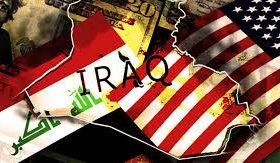Rebuilding Iraq: U.S.A Achievements through the Iraq Relief
Iraq’s deterioration started with Saddam Hussein’s bad governance and later crashed almost the remaining economy due to war. After the war, the United States solely pledged to support the rebuilding of Iraq to help the country get back from its knees through the Iraq Relief and Reconstruction Fund (IRRF).
Back in 2003 when Iraq was getting relief from war, Congress approved to support $2.5 billion as an immediate relief that was to cater to water, medicine, and food. The same year another over $18 billion was approved to cater to the general reconstruction of Iraq. In 3 years, half of that money was disbursed to fund projects in the political spheres, security, and economics.
The idea of funding Iraq was to help jumpstart the reform and rebuilding processes when the country’s needs were huge. Also, the US wanted to see that the Iraq government had a stable, prosperous country, and they had to take that risky opportunities to build hope and help Iraq to develop democratically, be at peace with other neighboring countries, and be a free society plus a vibrant market economy than before.
Iraq Journey
Before the Iraq war and Saddam dictatorship, the income per person was over $3, 800 back in 1980 which was considered higher than that of Spain by then. Fast forward to 2002, the amount had dropped to a mere $700 lower than that of Angola.
The rule of Saddam, on the other hand, was supported by the Baath Party’s pan-Arab system, which affected the growth of institutions that could mirror the diverse nature of the country. It was tough for Iraq people as the country was a closed society with no free press, no independent judiciary, and a lack of connection to the outside sources of information. For instance, the public service infrastructure was about to collapse after 20 years of negligence, with almost zero investment in many crucial areas.
The south part of Iraq was under-funded which affected people’s standard of living, health, and education sector. Also, the few profits and investments that the country made were politicized continually putting the country in a strenuous situation. The education sector affected a generation of children for not acquiring proper skills to help them grow and manage an economy.
Iraq Economic Rebirth
According to the UN and the World Bank, estimated after the war experience in 2003, Iraq needed $55 billion to cover the reconstruction of the whole country. Iraq had foreign debt accumulated as a share of GNP more than any other country for up to $124 billion. The amount owed was from corporations and foreign governments.
In the area of the banking sector was dysfunctional, without any credit facilities or functional payment system. The sector of agriculture was not able to provide citizens with a dependable source of food and income. Therefore, the government had to import food rations that would be distributed freely to all people, and that exhausted the sector of its competitive capacity. The painful moment is when sanctions came as a result of the Gulf war and Iraq became completely crippled economically only dominated by the ineffective state-owned enterprise with no incentive to increase productivity. After the war the state was dire for Iraq as you can imagine out of a population of 25 million, only 5.5 million could have access to a clean and stable water supply. The city’s sewage system was not working properly and electricity was not accessible by all.
The UN and World Bank proposal was very important to ensure Iraq not only overcame the painful experience of lack but had a stable government and economy.
I am an Author and what makes me the one is my ability of playing with the words. I also enjoy writing poetry and engaging my audience in my words. I have written for many websites and eBook and gained a good response.
 Tagged:
future of iraq, iraq economy
Tagged:
future of iraq, iraq economy
